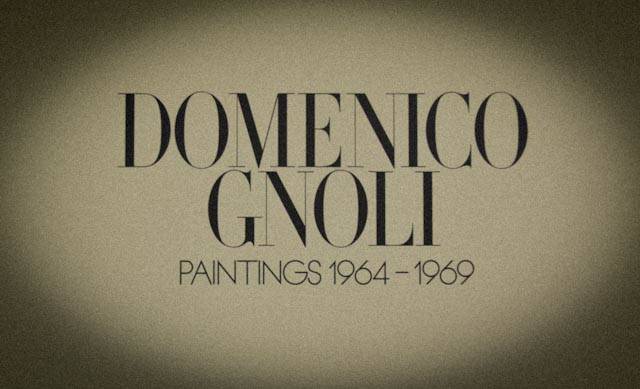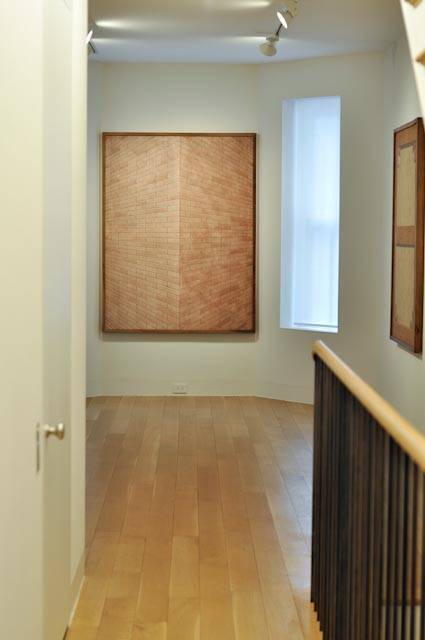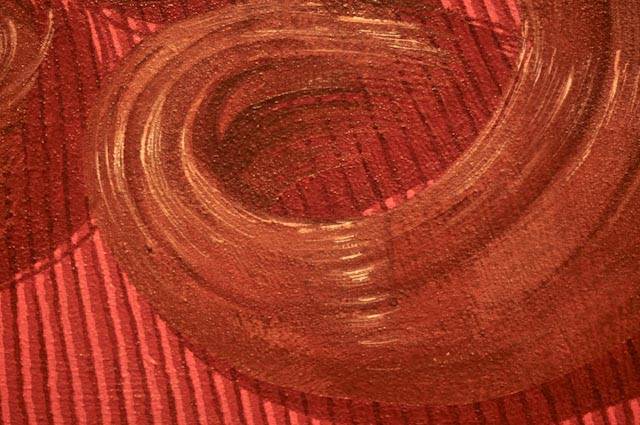The Rebirth of Domenico Gnoli's Art
A surreal yet strangely familiar feeling overcomes me as I walk in to a townhouse at 64 East 77th Street. Luxembourg & Dayan, a secondary market gallery founded to present curated museum-level exhibitions of modern masters and contemporary art, houses a rare works exhibition of an Italian artist that most have not heard of, nonetheless he is considered an Italian cult figure in the art world. Domenico Gnoli: Paintings 1964-1969 is after all the first U.S. exhibit of his works since his untimely death four decades ago.
Gnoli himself could not have picked a better place to show off his artwork. The intimacy and privacy of a New York townhouse further add to the elegant mystery that seeps from his canvases. Incandescent, large paintings adorn the few story building inviting onlookers to the world as seen by Gnoli. And a strange world it seems… or does it?
As I stand under a large canvas filled completely with detailed strands of a woman’s curly red hair, I see each lock, my eyes follow each curve and get lost in the high and low lights Gnoli created, and I feel small. I feel like a child. In front of the pair of trousers I get the feeling of being about to be scolded by my father… The detailed dress or shirt collar, remind me of being in the arms of my parents as a little kid. The parted man’s hair viewed from the top could might as well be that of my father kneeling down to tie my shoe when I still did not know how to.
Gnoli’s work is described by the gallery: “In canvases that are at once theatrical and humble, intimate and remote, humorous and melancholy, artist Domenico Gnoli uncovered a universe of meanings to be found in the details of everyday objects. His meditations on the material trappings of bourgeois Italian life directly challenged the politically charged discourse proffered by artists of the burgeoning Arte Povera movement by suggesting that identity is constructed primarily around consumerism and commercial choices. Supra-realistic, subtly colored, luminous and large, his paintings suggest that subjectivity can be expressed through the width of a pinstripe, or that the social values of an entire decade can be located in a lady’s leather handbag.”
To me his work is much more than that. It is personal, warm, and respectful. It is scrupulous and painstakingly beautiful. His thorough examination of simple, everyday scenes is thought provoking and magical.
I had the rare opportunity to interview Domenico Gnoli’s widow Yannik Vu and ask her a few questions about Gnoli and his work.
As a person closest to Domenico Gnoli, as an insider, can you tell us what was Domenico’s approach to painting?
He was painting the way one is cooking. To him it was so natural. Some people need a lot of preparation; they lock themselves in a studio. He would come in with his brushes and things and everything was used. For example if he would have no easel he would take a chair and he would take a broom and attach it and he would put his canvas on top and paint, there was no mannerism about painting.
Did he set a specific time for painting?
He would very rarely do that. He would paint very regularly. I would say he would spend at least six hours a day on painting and then he would work at night on his drawings.
His work is very meticulous; it’s very detailed, so I would assume it took a while to finish one of his paintings.
He was a very fast executor. He always made a living out of his work, but his paid work at the time really was illustration, but his desire was to paint. So he had two parallel jobs, and the craftsmen allowed the painter to work but it was taking time away from the painter, so it is difficult to say how long a single work would take to complete, plus he was travelling from one place to another because he was working for magazines and they would send him on assignments. He went to Russia. The USSR at the time, we went to Prague and Israel and South and Central America. He illustrated for Life Magazine, Horizons and Sports Illustrated, I think he was illustrating for most magazines in America at that time. That is why New York was very important to him. He came to live, work and exhibit in New York in 1955 and 1956, and he left in 1962, and we came back in 1965, we actually got married in New York although we met in Paris. And finally he came back in 1969 for his last exhibition.
What was his favorite technique?
YV: He loved the texture of the fresco. He was a great admirer of Masaccio. He would prepare his canvases with sand and vinilic glue. At the beginning he worked wit tempera pigments and vinilic glue and afterwards acrylic became available on the market and so he worked with acrylic, he liked to work with water he didn’t like oil painting, it took too long to dry, he preferred this technique because it was faster. With the use of sand he was trying to give the reflection of the light in it.
Was he at all into comic books?
YV: He was a great friend of Jules Feiffer and for his own distraction he would draw. So we would be talking in the evenings after and he would draw cartoons, he had a very fast hand. He had various aspects to his personality. He even made bronze sculptures, but very few; he unfortunately didn’t get a chance to pursue this. I am sure he would have gone great things but he didn’t get the time.
There is a certain 3 dimensional feel in his paintings…
YV: Yes, it comes from his days in stage design. He was working at the Old Vic in London as a stage designer for Shakespeare’s As You Like It. So yes, there is definitely a sense of theater in his work.
The exhibit is a must see. It remains open until June 30th at Luxembourg & Dayan, which is open Tuesday through Saturday, from 10AM to 5PM.
Click here for more information about Domenico Gnoli and his life and for gallery information.











































i-Italy
Facebook
Google+
This work may not be reproduced, in whole or in part, without prior written permission.
Questo lavoro non può essere riprodotto, in tutto o in parte, senza permesso scritto.